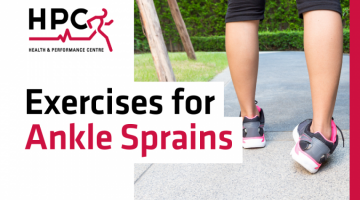Fractures of the Talus, Calcaneus, & First Ray | Physiotherapy Guelph

The talus is a small bone that helps form the ankle joint. It is inserted between the calcaneus (the heel bone), tibia, and fibula. The first ray is the bone segment consisting of the first metatarsal and the first cuneiform bones.
The talus, calcaneus, and first ray bone structures have fundamental roles in shock absorption. Due to their anatomical role in shock absorption, it is uncommon to break any of these bones, but the risk of fracture can increase following high energy traumas such as car accidents or falling from heights.
Repetitive high-force activity to the first ray may also result in a fracture.
Signs and Symptoms of Fractures of the Talus, Calcaneus, and First Ray
Common signs and symptoms of fractures of the talus, calcaneus, and first ray can include:
-
Bruising, tenderness and swelling with an inability to fully weight bear
-
In a minimally displaced talus fracture the individual may still be able to walk on the injured foot but pain will persist
-
Bone penetrating through the skin if it is an open fracture
-
Heel deformity in calcaneus fractures
-
First ray fractures have discoloration that extends to nearby parts of the foot.
How are Fractures of the Talus, Calcaneus, and First Ray Diagnosed?
Fractures of this kind are diagnosed by a medical professional. The professional will examine the ankle and foot region, checking to see if the individual can move their toes, perceive sensations on the bottom of the foot, and have normal ranges of motion compared to the healthy side. Usually when the medical practitioner expects a fracture, an x-ray is used to clarify if in fact there is one and its severity.
How are Fractures of the Talus, Calcaneus, and First Ray Treated?
Treatments will depend on the severity and the location of the break. If the break is located on the talus or calcaneus, the ankle will likely be placed in a cast. In the early stages of rehabilitation an emphasis is placed on immobilizing and elevating the foot and ankle. Pain medications may be prescribed depending on the level of foot pain the individual is experiencing.
If the break is severe and the doctors do not expect the bone to properly heal on its own, then surgery may become necessary. Once the cast is removed, physiotherapy is recommended to slowly increase the ankle’s range of motion and strength after being immobilized for weeks. Your Health and Performance Centre Guelph physiotherapists will assign stretches and a slow induction of weight-bearing exercise at a pace that allows for adequate rest to eliminate risk of aggravation.
If you have suffered one of these fractures, reach out to us to learn more about how our Guelph Physiotherapists can help guide you through the rehabilitation process.
*About the HPC Student Volunteer Program*
Each year, approximately 30 University of Guelph students are selected following a competitive application process to take part in the “HPC Volunteer Program.” This program provides an opportunity for U of G student volunteers to translate their academic knowledge into practice, while gaining first-hand experience and mentorship from the team of certified physiotherapists and chiropractors at the University of Guelph’s Health and Performance Centre. As a result of this exceptional partnership between the University of Guelph and the HPC practitioners, students can gain valuable insight on evidence-based practice prior to graduating from their respective programs. Click here for more information on co-curricular experiential learning opportunities at the University of Guelph. This article was written by members of the 2021-22 HPC Student Volunteer Program.



